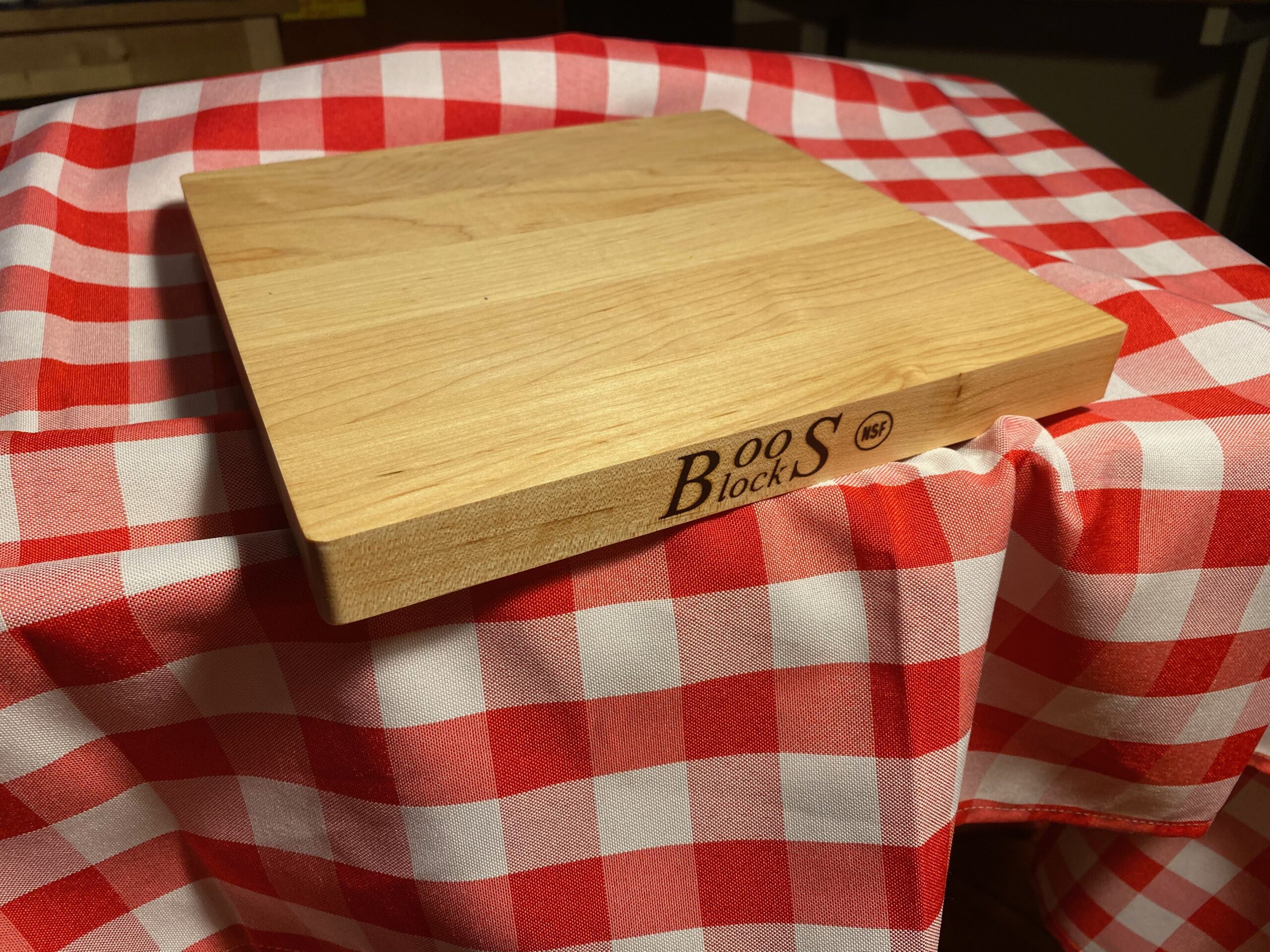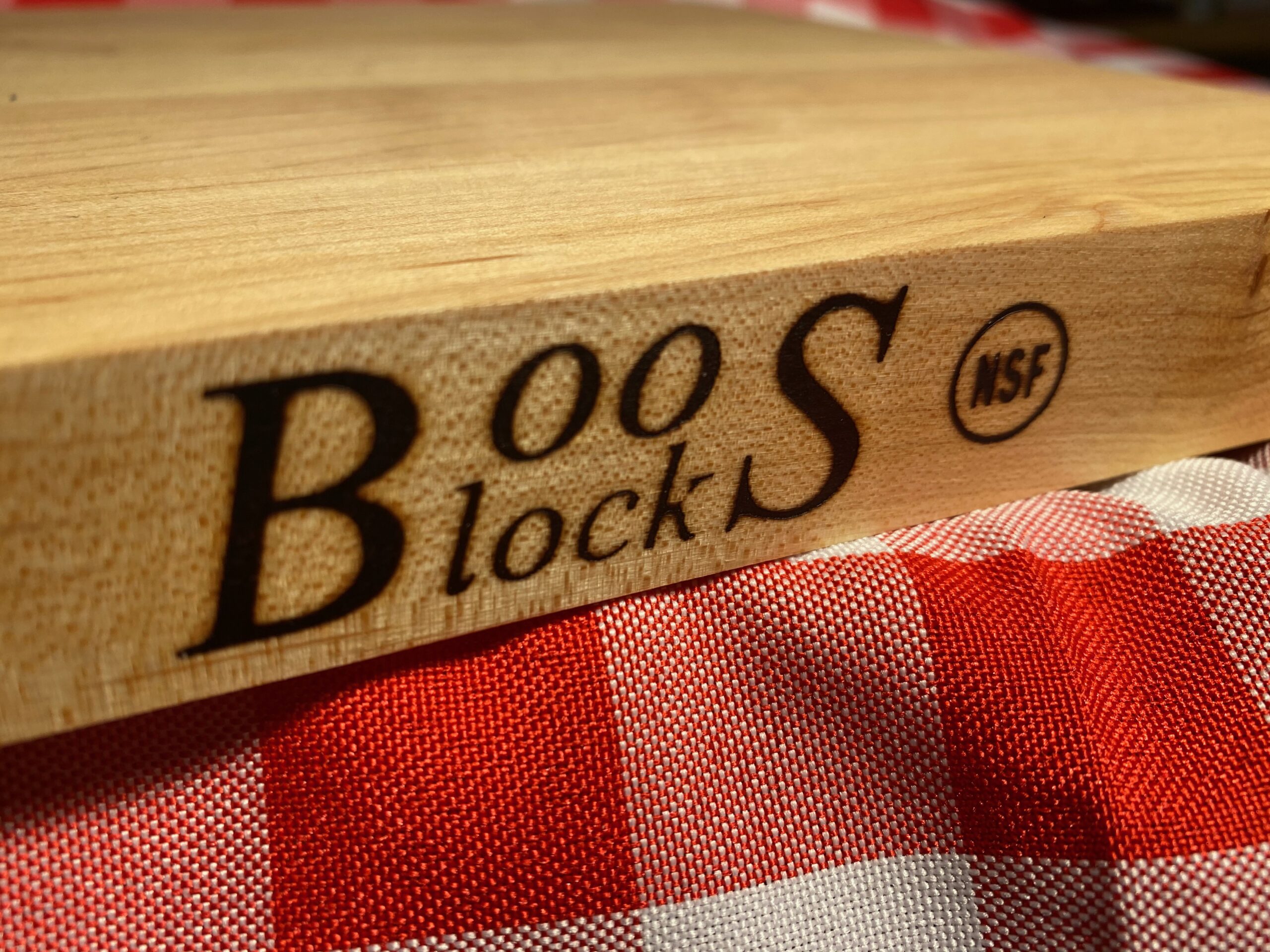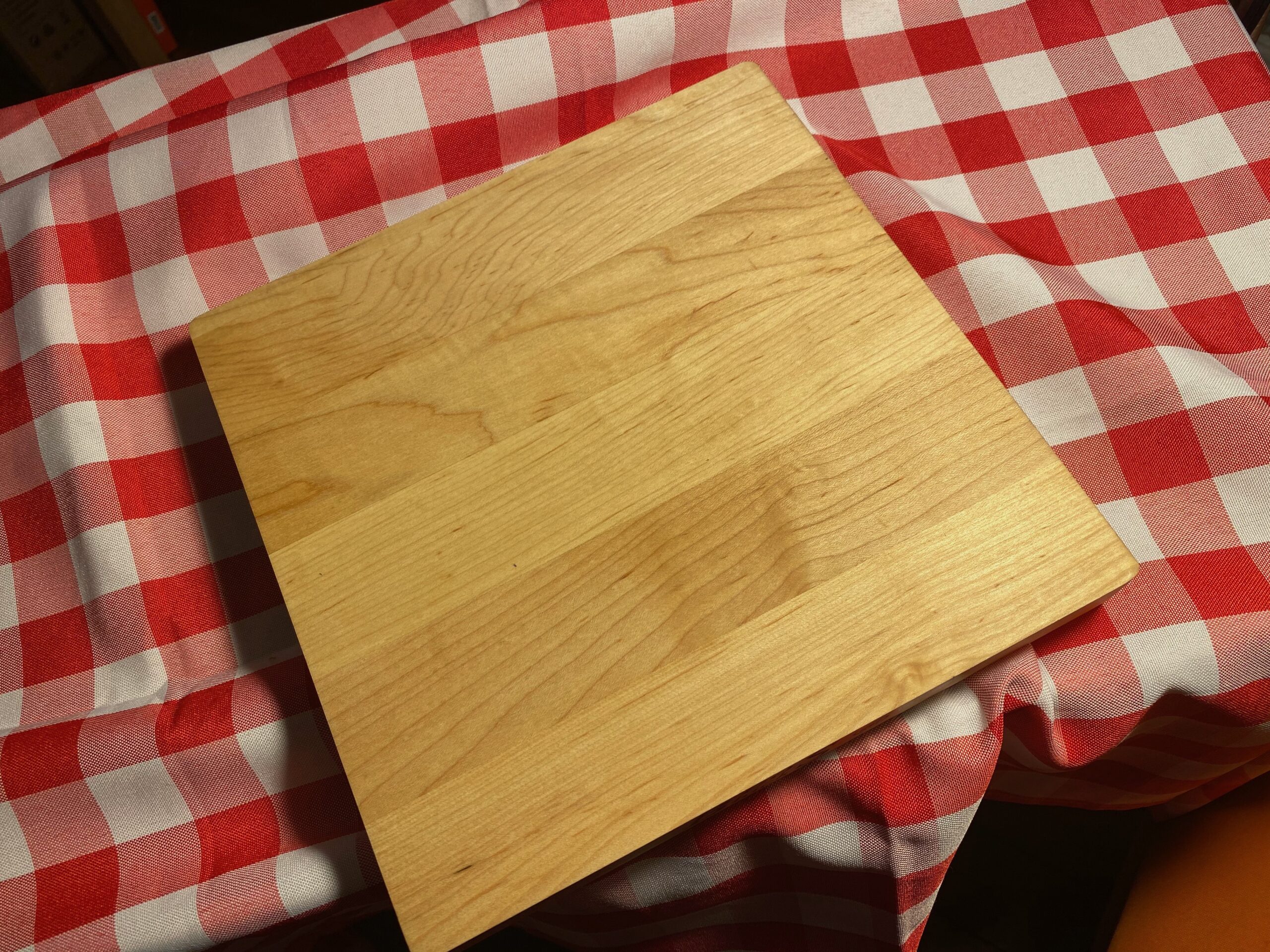John Boos Block maple wood cutting board: as expected, no metals detected at all! (+ available on Amazon, I bought this for myself!)
Published; June 28, 2020
John Boos Maple Wood Cutting Board
When tested with a high precision XRF instrument (in “Consumer Goods” mode) no metals were detected in the item pictured. Multiple 120-second tests were done to confirm these results. I purchased this to use as a background for some of my photos and also to use as a background for some of the testing I do. Solid uncoated natural wood items do not normally test positive for any metals when tested with a high-precision XRF instrument in Consumer Goods mode — so they make an excellent background to use to prop small items up against for testing. In using a known background that is entirely metals-free (as I do with all of the testing I conduct), I can be assured that metals from background objects or surfaces do not “contaminate” the readings for the object that I am testing.
Functionally, this would probably also make an excellent cutting board, of course, but I haven’t yet used it for that intended purpose – and I don’t plan to! 😉 Here’s my Amazon affiliate link for this product (they have similar cutting boards in many sizes and shapes) and the product seems to be of excellent quality and has good reviews! https://amzn.to/3iisR03
Do cutting boards ever have Lead?
Cutting boards don’t NORMALLY have Lead or other toxic metals — if they are plain unfinished wood. I have, however, tested many different cutting boards that have been positive for unsafe levels of Lead!…
I have found Lead in the finish of vintage cutting boards, and in the decorative elements of both vintage and modern cutting boards (for example, integrated hanging hooks, or decorative inlays made of non-wood materials). It is always the best idea to get a simple (undecorated, unfinished) wood surface to use as a chopping block — plus [if sustainably-harvested, and well cared-for], a beautiful, high-quality long-lasting hardwood cutting block is a more environmentally-friendly choice than many of the other options out there, like plastic cutting surfaces. Of course if you live in a home where you prepare meat or other animal products, and you use a wooden cutting board for that specific function, you do have to clean it very well between uses [which is why many chefs prefer the plastic color-coded boards for fish, poultry and meat].
Thank you for reading and for sharing my posts. Please let me know if you have any questions.
Tamara Rubin
#LeadSafeMama
Amazon links are affiliate links. If you purchase something after clicking on one of my links I may receive a small percentage of what you spend at no extra cost to you.
Never Miss an Important Article Again!
Join our Email List












Hi Tamara, thank you for all the valuable information 🙂 I am curious to know what is/are the cutting boards you use at home ? Thank you.
I use these!I love my Boos Blocks!
What do you think of 100% natural latex rubber cutting boards?
I have not seen those – so have not tested them.
T
Hi Tamara, What are some alternative options for cutting meat? Have there been any tested?
Thank you.
Hi Tamara, I have a concern for glue used with cutting boards which are made with multiple pieces of wood (and not one solid piece)…what is your take on this? And do you test for toxicity with the wood glue leaching out over time?
Hi Tamera,
Do you recommend any glass cutting boards? Or know of any that are safe? Thanks!
All of the glass ones I have tested have been negative for Lead.
Thank you!
Hi Tamara,
Thank you for all you are doing to help keep us all safe. I have watched your movie and read much of your blog and reports! I have disposed of a 15 year old set of Mikasa dishes that my husband and I loved, but couldn’t trust to be safe for our children and grandchildren as well as ourselves. I breaks my heart that Mikasa would care so much to make beautiful dishes and not make certain they are safe for families. My dishes were nearly identical to a set you tested and found lead.
I would like to know if you have a particular wax or oil that you recommend for your wood cutting boards?
Thank you.
Hi, Thanks for all you do. I’m wondering if the consideration of glue of non single wood cutting boards was considered. I was going to purchase a boos board, but after watching the manufacture process I realized it wasn’t a single wood board. Should I worry about the glue for bonded boards?
Thank you so much for all your hard work and research! I recently fell for rice husk cutting boards and wheat fiber food storage containers. People be warned, do not use these. There are problems with these composite plastic products that make them unsafe to use for food contact which they are ot telling people i.e. “greenwashing”. I had to return the items. Please warn consumers.
See artices and links and please let people know? In one article: brief synopsis: Elucidation of Non-Intentionally Added Substances from Plant Fiber/Plastic Composites by UPLC-QTOF/MS:
* [7]. Nature-derived does not necessarily mean safe, as plant fibers may contain many bioactive components, some of which could be allergens or even toxins
[8,9]. In addition, pesticides applied during plant cultivation or antimildew agents used during storage could remain in the plant fibers and, consequently, could be present in PPCs [1]. Additionally, additives used in plastic production, such as antioxidants in polypropylene (PP)
[10,11] and plasticizers in polylactic acid (PLA)
[12], monomers or oligomers of some plastics, as well as impurities, degradation, or reaction products of raw materials, could exist in PPCs. {13,14,15]. Almost all plant fibers have a hydrophilic nature as a result of rich hydroxyl (OH) and carboxylic acid (COOH) groups in heteropolysaccharides. Hence, compatibilizers or coupling agents are generally required for the manufacture of PPCs to achieve higher compatibility between the polymer matrix and the plant fibers, and to improve the properties of the PPCs . [4]. Any substance present in PPCs could migrate out into the contacting media and consequently pose potential risk to the consumer.
And see link to: https://pmc.ncbi.nlm.nih.gov/articles/PMC8707241/#toxics-09-00343-f001 (Safety Risks of Plant Fiber/Plastic Composites (PPCs) Intended for Food Contact: A Review of Potential Hazards ).
Hi! May I ask how do you care for the wooden cutting board and which oil do you use? I’m about to purchase this exact board that’s linked here but don’t know what is the safest way to oil it. Thank you so much for your help!!
What about KatuChef cutting boards that are made of titanium?
Great Q!! I’d also super love wood-board oil recommendations, & responses on the wood-board glue concerns/ Q’s others have mentioned if Tamara gets a chance ❤️
Great Q, looking at this too!! I’d also super love wood-board oil recommendations, & responses on the wood-board glue concerns/ Q’s others have mentioned if Tamara gets a chance ❤️
Just wondering if the Titanium cutting boards have been tested safe from toxins? Thank you for your dedication to a healthy home!!
I have one to test, but have not tested it yet.
Join us on Patreon to be among the first to see the test results when they are published.
T
Patreon Link: https://www.patreon.com/leadsafemama/membership